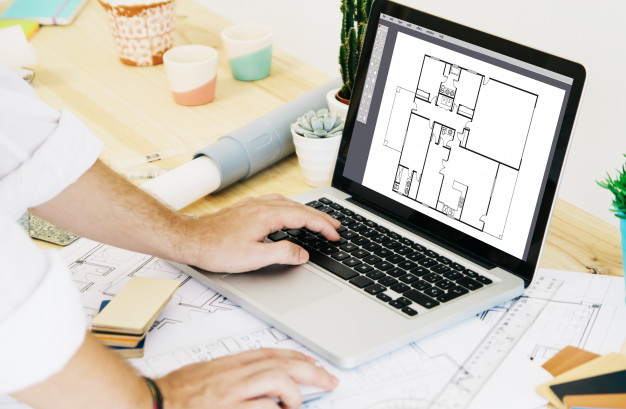
As one of the top interior design firms constantly engaged in various facets of ideation, execution and management, DefineHomz understands the importance of technology to the world of interior design. Likewise, any professional interior designer will resonate with the following blog accentuating the influence of technology on the interior design domain.
With the advancement of technology and its embodiment in the various industries and economic sectors, the world of interior design has not remained uninfluenced from the need of broadening one's tendencies to assimilate the growing changes. The capabilities of an interior designer that were earlier marked by just their creative senses, the repository of their competitive knowledge, the ability to translate ideas into physical form in a stranger's house, an eye for everything decor and designs have slowly but surely stretched to accommodate the technology developments relevant to the industry. Now, while keeping pace with evolving times, an interior designer needs to equip themselves with not just traditional design practices and skills but should also have mastery of computer-aided design tools and design software with regular knowledge updates. This requirement extends to all the interior design avenues, whether it be pertaining to works related to residential designs, commercial designs, or retail store designs.
Enhanced efficiency of ideation and execution
Technology has managed to transform fields that, for the longest time, have been pretty hands-on, providing a time-saving approach with great innovations displaying high efficiency. The interior design domain has especially witnessed a revolution wherein the entire mechanics of the designer-customer interactions and dynamics have been upgraded. Computer-aided programs ( CAD ), besides being an exceptional creative outlet and having practical applications, provide otherworldly experience to the customers, with their choice of designer and design no longer based on just blind faith or references, but what they see and deem fit. Overall, technology has birthed new opportunities for designers and customers to collaborate more efficiently for the design and product development industry.
Processes like Building Information Modeling (IBM) have made the cooperations, coordination and communication between clients, designers, lead builders, architects more seamless for specific projects as it allows digital representation of functional and physical characteristics of buildings and infrastructure. Apps such as Pinterest enable creating mood boards on smartphones and computers that can act as an archive of inspiration, creative ideas, and favourite design elements while also collaborating with their clients to reach design consensus after brainstorming on various ideas and creative breakthroughs.
Evolution in marketing and communications
One of the most important contributions of technology to the field of interior designing is the competency or the capacity to render digital creations of room layouts and to share them amongst experts and peers within the community all over the world without being restricted by physical location and limited time. Communications have become highly efficient, receptive and timely with applications like Skype, Whatsapp, Zoom, Facebook video call eliminating the constant back and forths that a shortfall of exchange of optimal information, expectations, desires, ideas entails. In fact, beyond the execution and ideation front, the impact of the technology for customer acquisition and business expansion has been very far-reaching. The world of technology has transitioned to a format that offers opportunities to form meaningful connections to prospective clients through adequate content creation and even capturing leads through paid social media marketing campaigns. The Internet has evolved to become a major source of exposure, marketing, sales, and revenue boost while allowing companies and businesses that provide interior design services to showcase their works, communicate with their clients and consumers through Facebook, LinkedIn, Instagram, emails, blogs and much more.
It won't be an understatement to say that interior design has been revolutionised by technology for various modalities like customer and project management, ideation, and execution and continues to be at the forefront of further ceiling-breaking developments like Virtual Reality and Artificial Intelligence. Technology is changing the way various market sectors interact, and interior design is no exception to this evolution.


